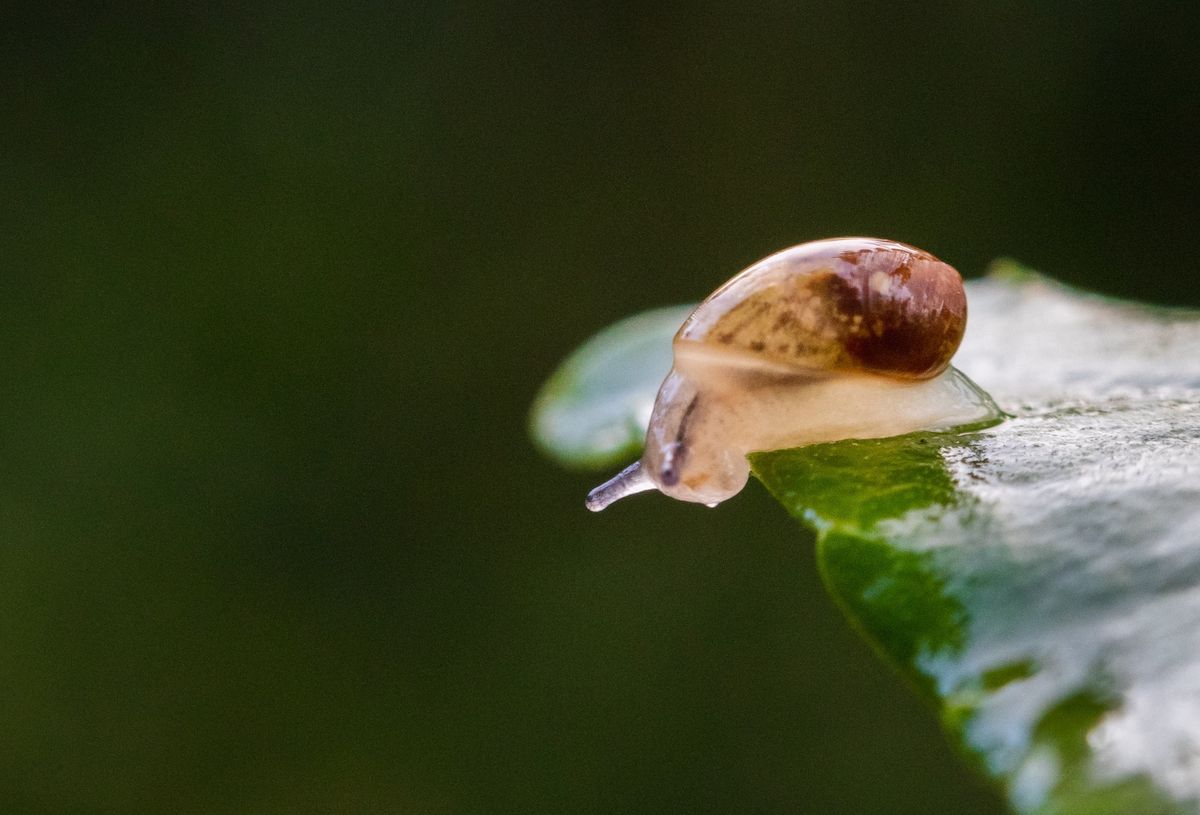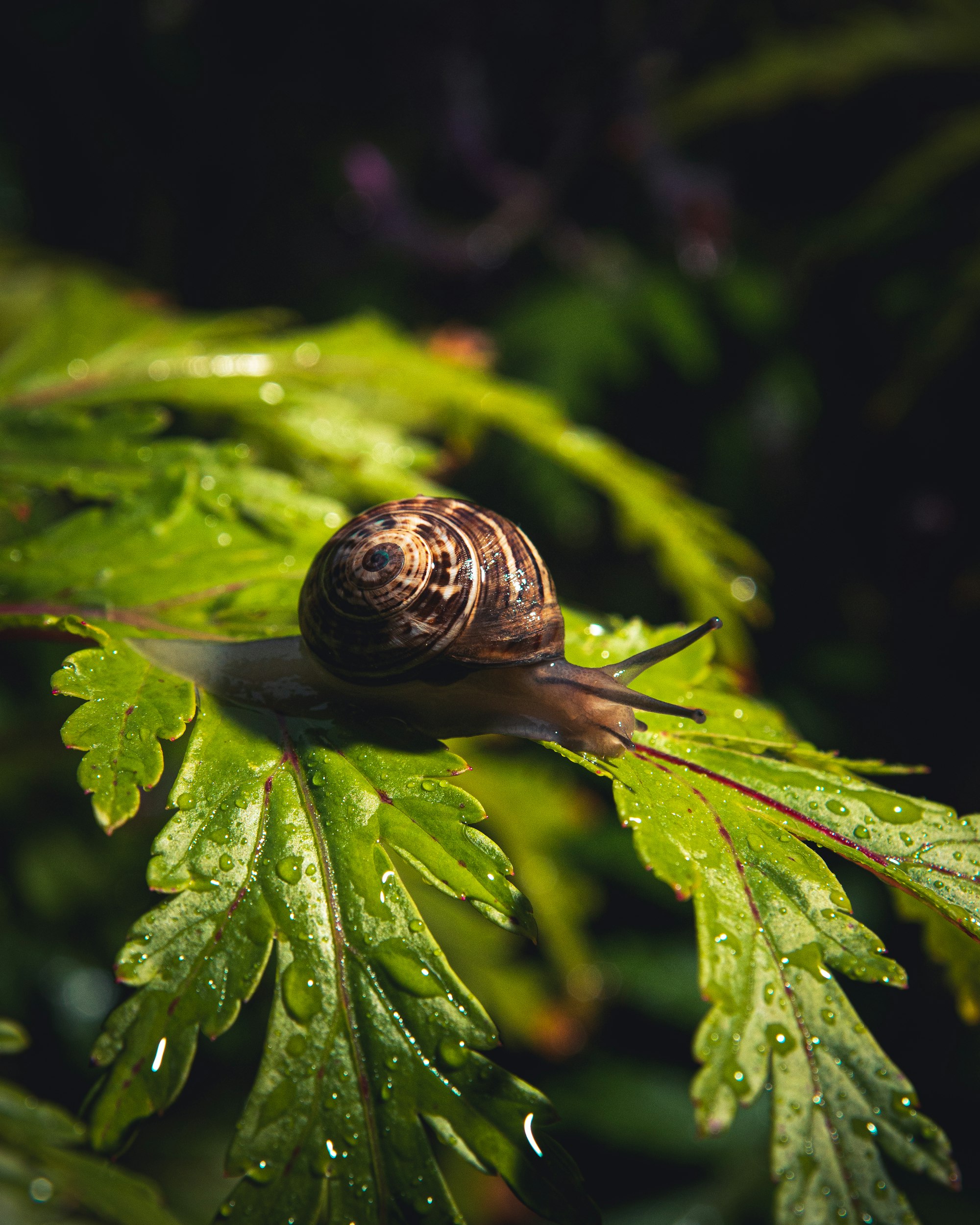Snails and Slugs
Snails and slugs can be a gardener's worst nightmare as they feed on plants, leaving destruction in their wake.

Identifying these slimy creatures is essential for implementing effective treatments and preventions to ensure your garden remains green and vibrant.
As you explore the world of snails and slugs, you'll learn about their distinctive characteristics and habits.
With this knowledge, you can apply various control methods to protect your garden from these intruders, contributing to a healthier and more productive outdoor space.

Identification of Snails and Slugs
One key difference to look for when identifying snails and slugs is the presence of a shell.
Snails have a spiral shell, while slugs lack this outer protective covering.
Both snails and slugs belong to the animal group called mollusks and can be found in various sizes, with garden snails typically ranging from 1-4 inches and garden slugs about 2-4 inches long.
In appearance, these creatures can be quite slimy and are often encountered in gardens or damp environments.
Pay attention to their body structure and skin texture to differentiate between the two.
Identifying these mollusks accurately can help you determine the best course for preventing plant damage and maintaining a healthy garden.
Lifecycle and Habitats
During the day, snails and slugs usually reside in damp, shady areas to keep their soft bodies from drying out.
They lay their eggs in the soil, often near the base of plants, providing a protective cover from weather and predators.
In the warmer months, such as spring and summer, the eggs hatch rather quickly, while in cooler seasons, like winter, the process takes a bit longer.
They become more active at night and venture out to feed on leaves and other plant material. Environmental conditions have a significant impact on slug and snail populations.
These creatures will thrive in wet, damp surroundings, whereas in dry, hot climates, their numbers may decline.
To manage the slug population in and around your garden, a combination of preventative measures, habitat modification, and targeted treatments can effectively control their numbers.

Diet and Damage of Snails and Slugs
Snails and slugs feed on leaves, seedlings, and other tender plant parts. They can severely damage your plants, including flowers and fruits, and be a nuisance in gardens.
Their feeding habits involve rasping or chewing plant tissue, leaving irregular holes and silvery slime trails behind.
To protect your garden, you should identify the signs of snail and slug damage and take preventive measures, such as using natural barriers or traps.
Prevention Strategies
Follow these prevention methods to control snail and slug infestations in your garden.
First, set up traps by placing boards, lettuce leaves, or cardboard in moist areas where these pests tend to hide.
Check these traps in the evening and remove any captured snails and slugs.
Additionally, install physical barriers like copper foil around your plants to deter slugs, as they avoid crawling over them due to an uncomfortable sensation.
Maintain your garden by removing debris, dead flowers, weeds, and hiding places such as bark mulch and compost piles, where snails and slugs thrive.
Consider using cloches to protect your plants while maintaining a tidier garden environment.
Regularly check and adjust your irrigation system since these pests thrive in damp conditions.
Lastly, try using beer traps or crushed eggshells as a natural deterrent, as these methods do not harm your garden and effectively keep snails and slugs at bay.
Non-Chemical Treatments
You can actively manage your garden to reduce the populations of snails and slugs.
One method is hand-picking snails and slugs at night using a flashlight and then relocating them far from your garden.
Create an environment that favors natural predators such as ducks, toads, frogs, birds, beetles, and chickens.
They'll help control these pests by feeding on them, ensuring your garden is protected.
Another effective approach is to set up traps using bran or bait within a small, dark container. This will attract snails and slugs, allowing you to capture and dispose of them.
Additionally, protect your seedlings by using coffee grounds as a barrier. The caffeine works as a natural deterrent, as snails and slugs avoid crossing over it.
Planting astilbe, phlox, mint, and marigold in your garden will also help repel snails and slugs.
These plants give off strong scents that deter these pests.
Likewise, growing potatoes can attract pests, allowing you to relocate them and protect your other plants.
Finally, encourage natural predators in your garden by providing suitable habitats like a small pond, log pile, or shrubby area.
This will attract frogs, birds, and beetles, keeping the snail and slug population under control.
Chemical Treatments
Chemical treatments can effectively control their populations when dealing with snails and slugs.
One option is molluscicides, such as metaldehyde or iron phosphate, which can be applied as bait in your garden.
To utilize this control method, scatter bait pellets around your plants, being cautious not to over-apply.
Alternatively, you can use other household items like salt, beer, or copper as natural deterrents.
For example, copper can create barriers, while beer can be poured into shallow containers and placed in your garden, attracting and drowning the pests.
Diatomaceous earth is another option to consider, as it damages the soft bodies of these pests, leading to dehydration and death.
Sprinkle the diatomaceous earth around the affected plants to reduce their activity.
Remember, it's essential to follow the instructions of any chemical control method closely to ensure its effectiveness and safety for your plants and the environment.
Biological Control and Pest Management
To effectively manage snail and slug populations, you can utilize biological control methods, which involve using their natural predators.
Introducing species like ground beetles, centipedes, and nematodes into your garden can help keep these pests under control.
When employing pest management strategies, consider combining Integrated Pest Management (IPM) with biological control.
IPM is a long-term approach focusing on cultural, mechanical, and physical methods, with chemical control as a last resort.
By incorporating these methods, you can ensure a more sustainable and eco-friendly approach to controlling slug and snail populations.
Monitoring and Long Term Control
Regularly inspect your garden, particularly during damp or cloudy weather, to identify snail and slug activity signs.
Early detection allows you to use traps, such as beer traps or copper barriers, to prevent further plant damage.
To maintain long-term control of snail and slug populations, consider including plants more tolerant to their feeding, such as sage, lettuce, beans, or strawberries.
Additionally, implementing crop rotation and removing excess mulch or garden debris can help deter these pests and reduce the need for regular molluscicide applications.
Frequently Asked Questions
How to permanently eliminate snails and slugs?
To permanently eliminate snails and slugs, use a combination of chemical control, natural methods, and preventative measures. Keep your garden clean, remove hiding places, and use barriers like copper wire to discourage their activity.
What are natural ways to get rid of snails in a garden?
Introduce predators like birds, frogs, or hedgehogs to your garden. You can also create beer traps or use a mixture of water, sugar, and yeast to lure and capture them. Repel them with crushed eggshells or use copper barriers around plants they favor.
Which methods are best for slug and snail prevention?
The best preventative methods include regular garden maintenance, removing potential hiding spots, and using copper barriers around plants. Encourage natural predators like birds or frogs to make your garden their habitat, which helps keep the snail and slug population under control.
How do you classify various types of slugs and snails?
Classification of slugs and snails is based on their physical characteristics, habitat, and feeding habits. Slugs are soft-bodied animals, while snails have a protective shell. Both come in various sizes and colors and tend to favor damp environments.
What are effective chemical controls for slugs?
Effective chemical controls for slugs include slug pellets containing ferric phosphate, disrupting their gut calcium metabolism. Some examples of these products are RHS Ferrimax Slug Killer, Doff Slug & Snail Killer, and Vitax Slug Rid. Use these chemicals responsibly and follow the instructions to ensure safety.
How to identify different slugs and snail species?
Observe their size, color, shell (if present), and habitat to identify different slug and snail species. Close examination of their body features and the patterns on their shells, if any, can also help. Conduct research or consult experts for accurate identification of each species.


